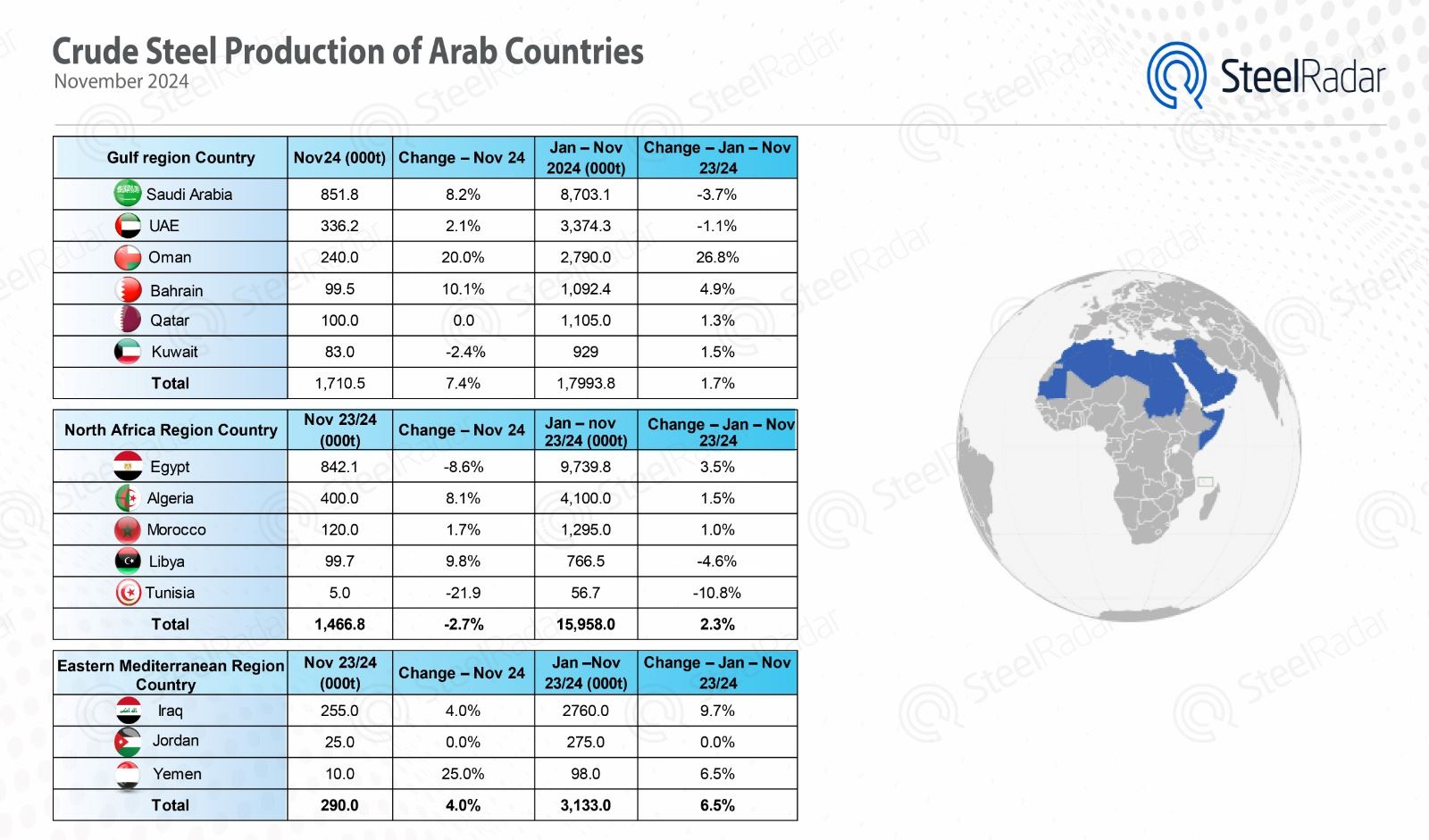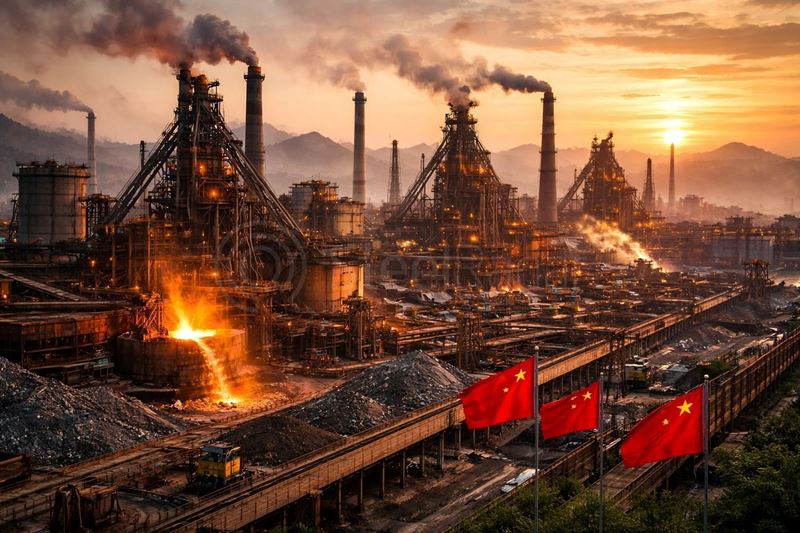According to World Steel Association (Wordlsteel) data, crude steel production in Arab countries reached 3.5 million tonnes in November 2024, up 2.5% compared to the same month last year. In this process, Saudi Arabia maintained its leadership by producing 851 thousand tonnes with an increase of 8.2%. Egypt ranked second with 842 thousand tonnes of production, but experienced an 8.6% decline in production. Algeria, on the other hand, increased its production by 8.1% to 400 thousand tonnes.
In the January-November 2024 period, total production increased by 2.7% to 37 million tonnes. Egypt led the way with 9.7 million tonnes, up 4.8% y-o-y. Saudi Arabia ranked second with 8.7 million tonnes, but posted a decline of 3.7%. Algeria ranked third with 4.1 million tonnes, up 1.5% year-on-year.
In the Gulf region, Saudi Arabia, Oman and the United Arab Emirates stood out, with Oman recording a remarkable annual increase of 26.8%. Saudi Arabia maintained its leadership with an increase of 8.2%. In North Africa, Algeria stood out with an 8% increase in production, while Egypt maintained its leading position despite a decline in production.
In general, the growth in steel production in Arab countries is considered as an important signal for both strengthening their regional leadership and increasing their influence in global markets. While the Gulf and North Africa regions stand out with their high shares in production, the Eastern Mediterranean continues to increase its contribution.









Comments
No comment yet.